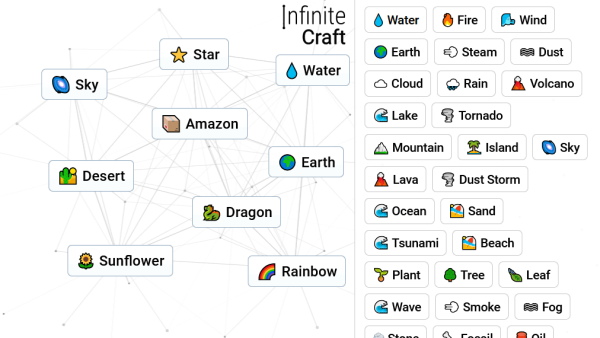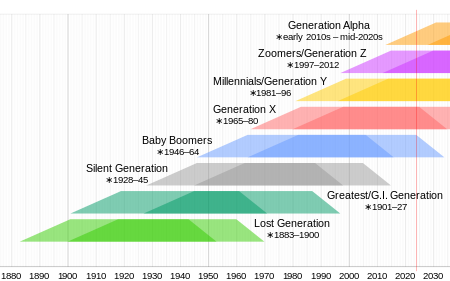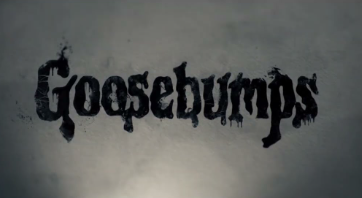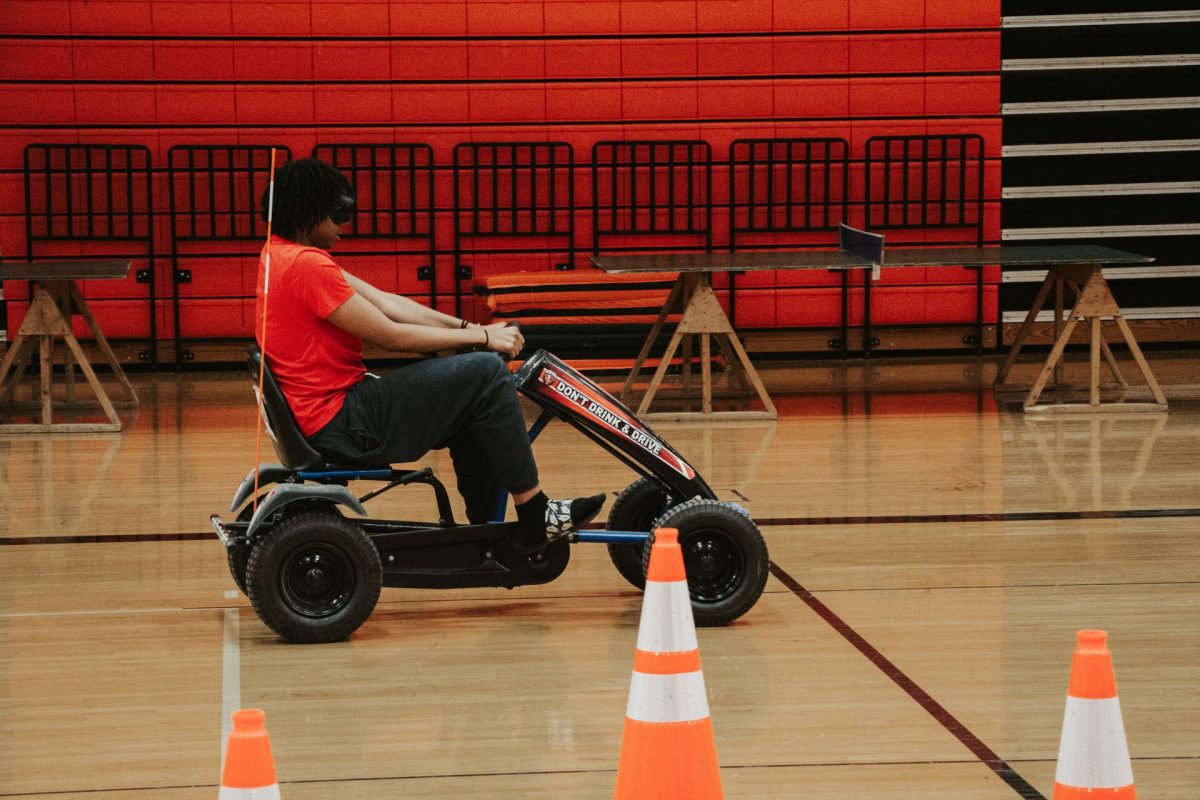You have probably heard of the game “Little Alchemy” or its successor, “Little Alchemy 2.” The original game came out in 2010 and was all about creating as many different objects as possible, starting with just four basic elements. There are a total of 589 possible elements in the original game, and around 700 in the sequel.
While “Little Alchemy” has been around for over a decade, now, there is a new element-combining game that has taken the internet by storm in recent months: “Infinite Craft.” It was developed by Neal Agarwal, who had previously created about 30 other, much smaller, games on his website Neal.fun.
“Infinite Craft” has the same basic premise as the “Little Alchemy” games: the player starts out with four elements – water, fire, earth, and wind – and must combine objects to make as many new objects as possible. What makes “Infinite Craft” unique, however, is that it uses artificial intelligence (AI) to generate new combinations.
The game uses an AI language model called LLaMA to create the elements. Whenever a new combination is attempted, a prompt is sent to the AI to determine the outcome. Once an element has been created the first time, any player can end up getting it. This also allows for players to get a “first discovery” – a label that appears below brand-new combinations. This has only happened to me personally one time, with Captain America Fuchsia – a combination of Captain America and the color, fuchsia.

As you can imagine, the game lives up to its name, since the possible combinations are literally infinite. A lot of the combinations make sense – water plus earth creates plant, fire plus mountain creates volcano – but there are countless strange or made-up elements that have been generated. Some of the weirdest ones I’ve come across include bumblebeaver, trumpformer, sharktopus, soggy toast, panda toast, and lobotimus prime.
In an interview with the New York Times, “Infinite Craft” creator Neal Agarwhal says, “Making a game with A.I. is at a weird place…It has moments of brilliance but also sometimes it’s like talking to a 5-year-old.”
Whenever something AI-based blows up in popularity, it brings up the debate over human versus computer-generated art and whether AI will take jobs away from humans. In the case of “Infinite Craft,” though, the complex AI was still programmed by humans and could not work alone. AI allows the game to do things humans can’t.
The game’s creator expresses this mindset. According to the New York Times, “Agarwal said he thought A.I. was best deployed for games meant to unfurl infinitely, and not as a way to replace people doing genuine artistic work.” Agarwhal is quoted, saying, “I could imagine future sandbox games that couldn’t have been made by programmers.”
While the game was only released on Jan. 31 of this year, its popularity soon skyrocketed. Over 300 million crafts are made every day in the game. Fans have created shared spreadsheets that consist of over 10,000 combinations. Dedicated Discord servers have been created.
Because of its infinitely-generating nature, the game is dynamic and ever-changing, so there’s always something new to discover. “That’s the cool thing about A.I. games,” Agarwal says, “I can set the basic rules but I don’t know how far you can take it.”
You can play the game – and the creator’s other fun games – by going to neal.fun.














